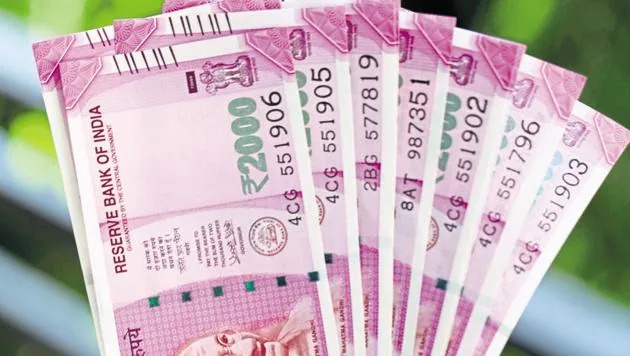The Reserve Bank of India (RBI) has clarified that ₹2,000 notes will continue to be legal tender. From May 23 to September 30, individuals can exchange notes up to ₹20,000 at a time.

What do you need to know about the ₹2000 note withdrawal?
The introduction of the ₹2000 note in November 2016 quickly fulfilled the economy’s currency requirements after the withdrawal of ₹500 and ₹1000 notes. Considering the sufficient availability of other denominations and the limited usage of ₹2000 notes for transactions, the Reserve Bank of India has decided to withdraw the ₹2000 denomination banknotes from circulation as part of its “Clean Note Policy.”
What does it mean by “2000₹ Note will remain legal tender”
The statement implies that businesses and individuals in India must accept the ₹2000 banknote as a valid payment method. This enables individuals to use the note for making purchases and settling debts, while adhering to the rules established by the Reserve Bank of India or relevant authorities.
Is there a limit on deposit of ₹2000 Notes in the Bank?
People can exchange ₹2000 banknotes upto to a limit of ₹20,000/- at a time.
Can individuals use ₹2000 banknotes for normal transactions?
You can use ₹2000 banknotes for transactions and accept them as payment, but it is recommended to deposit or exchange them by September 30, 2023.
Stock market’s reaction to ₹2000 note withdrawal on Monday?
- Banking and Financial Sector:
Withdrawing ₹2000 banknotes may affect the banking sector, impacting liquidity, cash flow, deposit/withdrawal patterns, and lending practices. Market reactions will depend on effective management and potential disruptions. - Consumer Goods and Retail:
The withdrawal of ₹2000 banknotes could also influence the consumer goods and retail sector. If consumers face difficulties in exchanging or depositing these banknotes, it could impact their spending patterns temporarily. Sectors heavily reliant on cash transactions, such as small businesses and local retailers, may experience some disruptions initially. However, the long-term effect could be positive as it promotes digital transactions and transparency in financial transactions. - Digital Payment Companies:
The withdrawal of ₹2000 banknotes could be an opportunity for digital payment companies. As people look for alternative payment methods, the demand for digital wallets, mobile payment apps, and other electronic payment systems could increase. This could potentially benefit companies operating in the digital payment space, leading to a positive market reaction for these companies. - Investor Sentiment:
Investor sentiment and perception also influence market reactions. Positive perception of ₹2000 withdrawal as a measure against black money and promoting cashless economy boosts investor confidence. Conversely, if there are worries about transition challenges, it may result in cautious investor sentiment and temporary market volatility.
Conclusion
It’s crucial to note that a multitude of factors influence stock market reactions and often make them complex. Efficient withdrawal implementation, government measures, and market conditions determine the impact and market reactions. Consult experts, review analysis, and monitor trends for better understanding.
Also, Check out our Blog on WPI Inflation.
Disclaimer: The information provided in this Blog is for educational purposes only and should not be construed as financial advice. Trading in the stock market involves a significant level of risk and can result in both profits and losses. Spider Software & Team does not guarantee any specific outcome or profit from the use of the information provided in this Blog. It is the sole responsibility of the viewer to evaluate their own financial situation and to make their own decisions regarding any investments or trading strategies based on their individual financial goals, risk tolerance, and investment objectives. Spider Software & Team shall not be liable for any loss or damage, including without limitation any indirect, special, incidental or consequential loss or damage, arising from or in connection with the use of this blog or any information contained herein.





